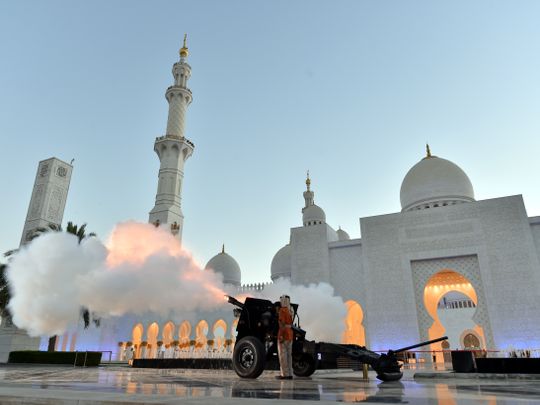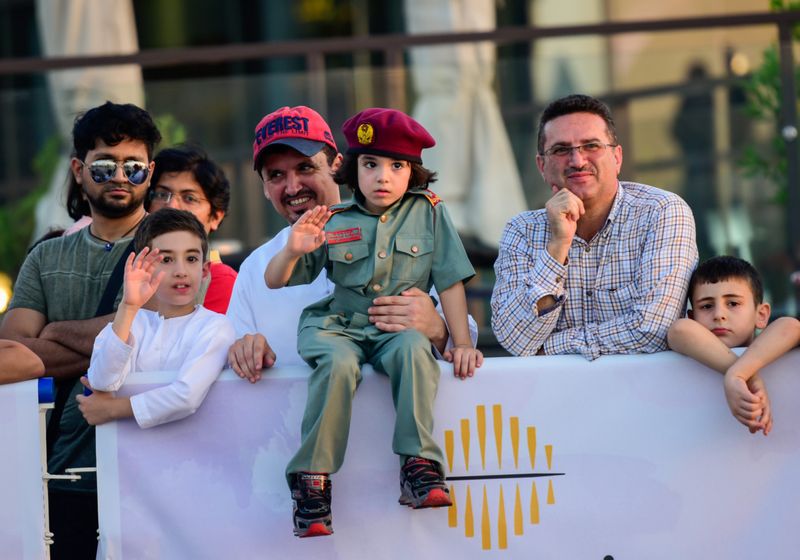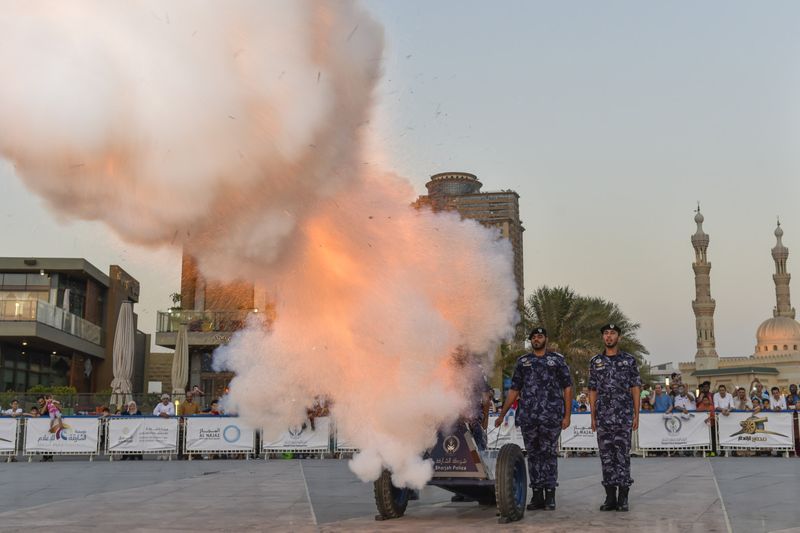
Dubai: The deafening boom of a cannon. Followed by the sound of azan echoing from the loud speaker of a mosque.
These are the sounds closely associated with the ending of fasts each day during Ramadan for most UAE residents. Gulf News takes a look at the tradition of cannon firing and its significance.

Why fire a cannon?
Ahmad Al Jafflah, a presenter at Shaikh Mohammad Bin Rashid Centre for Cultural Understanding, said that while most mosques in the UAE had muezzins, or the person who calls to prayer, they did not have loud speakers, until a few decades ago. The cannon was the best way to let people know that it was time to end their fasts.

“It’s a beautiful sound because it is a sound we remember from when we were children. We would be standing outside and as soon as the cannon was fired, we would run in to the home and start eating with our families. The practice of firing a cannon to mark the end of fasting started in Sharjah in 1930, in Dubai it started in 1960 and in Abu Dhabi in 1970,” he said.
“Sometimes we would play games with each other. We would take a piece of wood and hit the water tank and family would think it was the cannon fire and start ending their fast five minutes earlier. We would run in and stop them. So it was good fun for us as well,” he added.

170 decibel
The intensity of the cannon fire soundKeeping count
The start of Ramadan is marked with two cannon fires, while every day of Ramadan has a single shot fired. When the moon is sighted for Eid, two shots are fired again. Finally, two shots are fired at the start of the Eid prayer on Eid day.
The cannons being used right now are Brtish-made, from 1945.

In Dubai, five cannons are fired at the following places: Burj Khalifa, Eid prayer grounds in Al Mankhool and Al Baraha, Madinat Jumeirah and at Dubai City Walk, while one is kept as a back-up.
In Sharjah, 11 cannons have been placed across the emirate.
In Abu Dhabi, a cannon is placed at the Shaikh Zayed Mosque.








